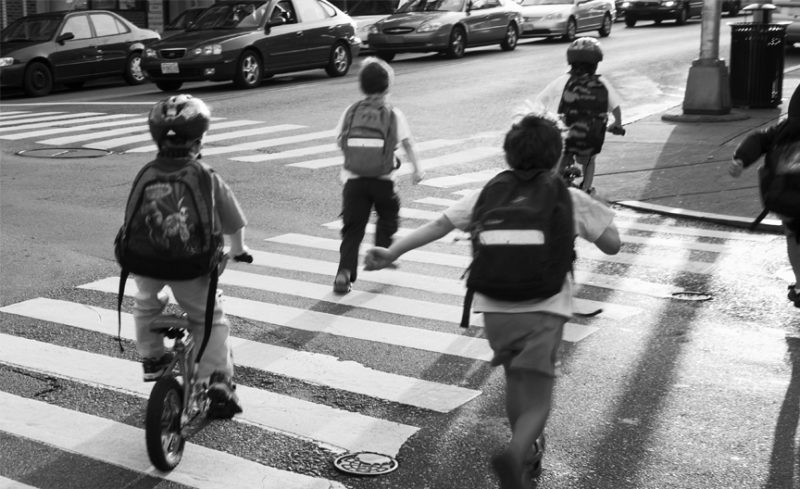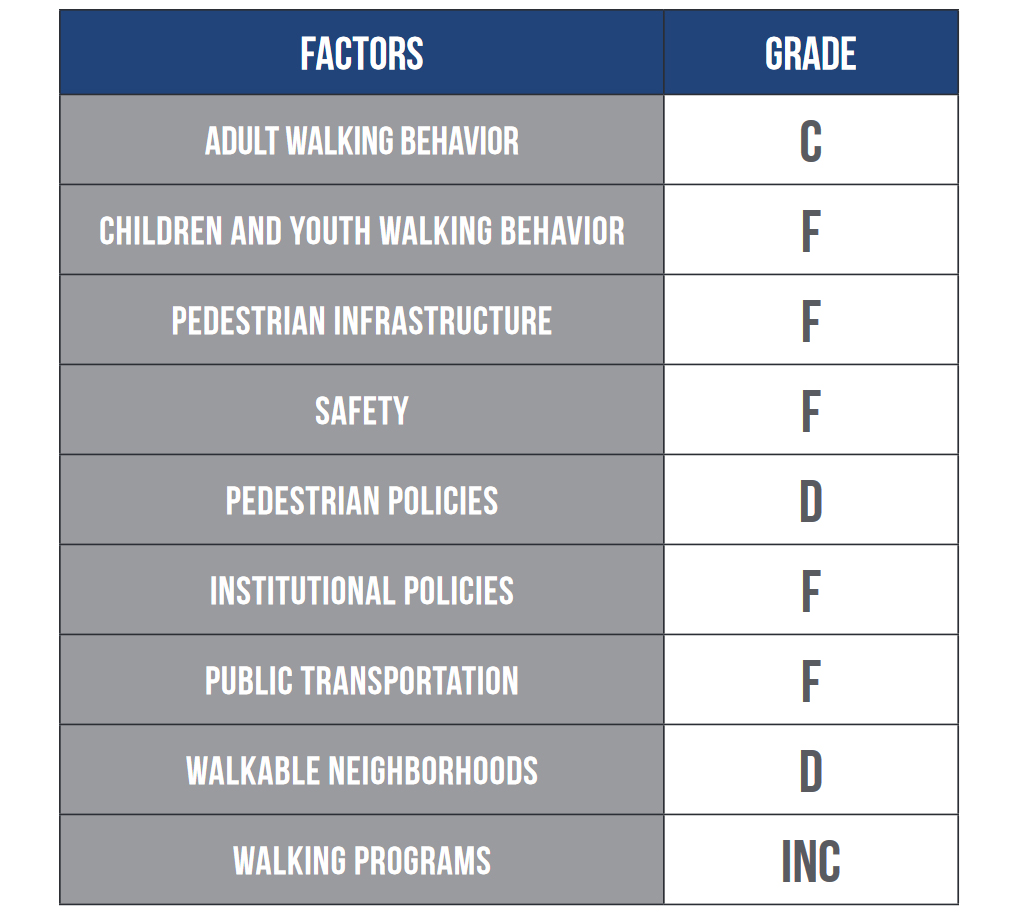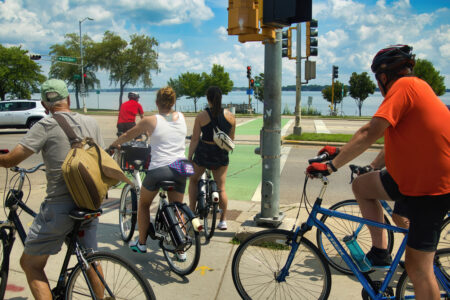
Share On Social!
The U.S. is failing five of nine factors that reflect walking and walkable communities, according to a new report card.
 Children’s walking behavior, pedestrian infrastructure, safety, institutional policies, and public transportation were graded an “F” by the new 2017 United State Report Card on Walking and Walkable Communities.
Children’s walking behavior, pedestrian infrastructure, safety, institutional policies, and public transportation were graded an “F” by the new 2017 United State Report Card on Walking and Walkable Communities.
The report is from the National Physical Activity Plan Alliance, which developed a system to evaluate U.S. walking and walkability.
Why walking is critical in Latino neighborhoods
Walking is a natural and inexpensive activity to improve health and prevent chronic disease.
However, safe places to walk are often not accessible, particularly in Latino neighborhoods, according to our own research. Thus, many Latino children and adults don’t walk and suffer poorer physical and mental health.
The state of walkable communities is so poor that, in 2015, the U.S. Surgeon General issued a Call to Action to to Promote Walking and Walkable Communities.
Report on: Walking among children
Less than 30% of children and youth walk to and from school on a regular basis, parents say, according to the report.
That’s down from 48% in 1969.
Also, 65% of children who live between 1/4 and 1/2 of a mile from school are driven to school or take the bus, likely due to concerns about traffic and safety.
In order to improve walking among children living within walking distance to school, safety concerns, like traffic, and community design, like sidewalks, need to be addressed.
For children living farther than 2 miles away from school, which is almost half of U.S. students, changes in school siting should be considered to improve accessibility and walking and to reduce dependence on vehicles.
Report on: Pedestrian and bicycle infrastructure
Pedestrian and bicycle infrastructure includes sidewalks, bike lanes, crosswalks, lighting, and streets.
Without adequate, dedicated investment, many communities don’t have the funds to pay for improvements for pedestrians and bicyclists.
The national average spending on pedestrian and bicycle infrastructure projects is less than half what experts recommend.
Active transportation experts recommend spending 3% of the $57 billion road budget-surface transportation budget-on biking and walking projects, which total $1.71 billion. Divide that by the 325 million people living in the U.S. and you get $5.26. Thus, active transportation experts recommend spending $5.26 per person on walking and biking projects, according to the new report.
Only five states-Alaska, Rhode Island, Vermont, Delaware, and Montana-meet this standard.
Be sure to share the walking report with your community leaders and planners to promote walking!
You can make a big change in your community.
Just like Rose Gowen and other advocates in the largely Latino city of Brownsville. They worked hard to turn an abandoned railroad track into a walking trail that connected residents!
By The Numbers
27
percent
of Latinos rely on public transit (compared to 14% of whites).



